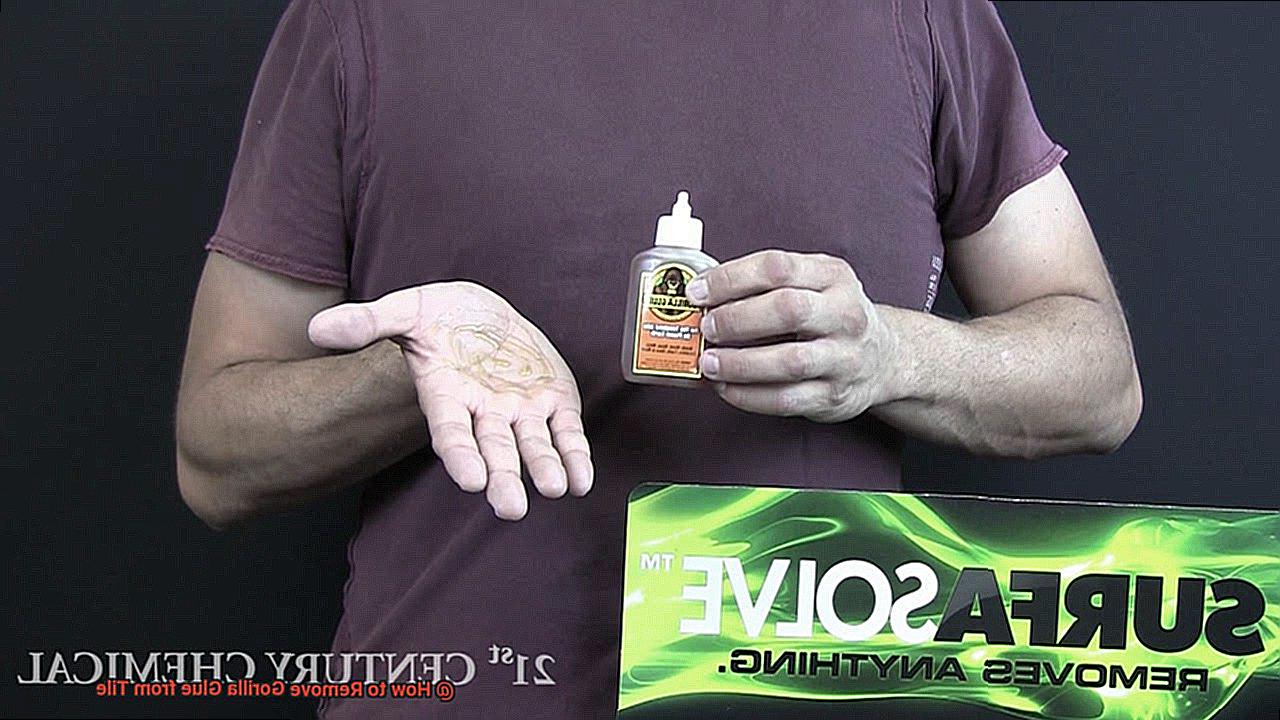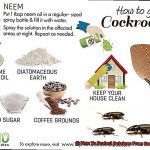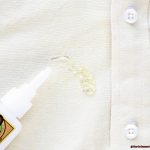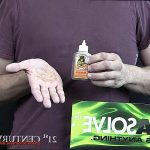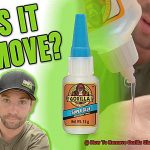Have you ever experienced the frustration of a Gorilla Glue spill on your beautiful tiled floor or backsplash? This super strong adhesive can be a nightmare to remove once it has dried onto surfaces. But don’t panic. With our expert tips and tricks, you can successfully remove Gorilla Glue from tile without causing any damage.
In this post, we’ll guide you through various methods for removing Gorilla Glue from tile surfaces. From using a razor scraper to applying heat, we’ve got you covered with the best tools and materials needed for the job. You’ll need a plastic scraper, rubbing alcohol, and a clean cloth to get started.
Patience is key when it comes to dealing with Gorilla Glue removal. It may take some time and elbow grease, but with our techniques and advice, your tile surfaces will be restored to their former glory in no time. So if you’re ready to tackle that pesky Gorilla Glue spill head-on like a pro, keep reading.
Identifying the Type of Tile
Contents
No need to panic. Before jumping into the removal process, it’s crucial to identify the type of tile you’re dealing with. Different tiles require different techniques and solutions to avoid damaging the surface.
The three most common types of tiles are ceramic, porcelain, and natural stone. Ceramic and porcelain tiles are clay-based, baked at high temperatures, while natural stone tiles are quarried, such as granite or marble. However, some natural stones like limestone or travertine may be more porous and delicate than others, requiring special care when removing glue.
To recognize the type of tile, check the packaging or consult a professional. A simple water absorption test can also help, by placing a few drops of water on the tile and observing how quickly it is absorbed. If it is absorbed quickly, it could be a more porous natural stone tile, but if it beads up or takes longer to absorb, it might be ceramic or porcelain.

Once you’ve figured out the type of tile, it’s time to gather the necessary tools and materials. You will need a scraper or putty knife, acetone or rubbing alcohol, a sponge or cloth, and potentially a heat gun or hair dryer. Don’t forget to wear gloves and eye protection when handling acetone.
Start by gently scraping away any excess glue using a scraper or putty knife, being careful not to scratch or damage the tile surface. Next, apply acetone or rubbing alcohol to the affected area using a sponge or cloth. Let it sit for a few minutes to soften the glue. For stubborn glue, use a heat gun or hair dryer to warm up the glue, making it easier to remove. Keep the heat source moving and avoid overheating the tile.
Once the glue has softened, use the scraper or putty knife to peel away the glue from the tile surface gradually. Repeat this process several times until all traces of glue are removed.
Afterward, clean the surface with soap and water to eliminate any remaining residue. If stubborn stains remain, try using a commercial tile cleaner or a mixture of baking soda and water.
Gathering the Necessary Tools and Materials
With a few simple tools and materials, you can easily remove the glue without causing any damage.
Start by grabbing a plastic scraper or putty knife to gently scrape away any excess glue from the surface. Remember to be cautious not to scratch or damage the tile while doing so. Additionally, don’t forget to wear gloves to protect your hands from the chemicals you’ll be using.
Next, choose a solvent that’s suitable for your tile surface. Acetone is a popular choice for removing Gorilla Glue, but it can cause damage to some types of tiles. So before use, test it in an inconspicuous area. If acetone isn’t suitable, consider using rubbing alcohol or mineral spirits instead.

Make sure to have clean rags or paper towels on hand to apply the solvent and wipe away any excess glue. To prevent spreading glue around or leaving behind any residue, use a clean cloth each time.
Lastly, if the tile has been damaged by the glue or scraping process, consider purchasing a tile repair kit. These kits typically include epoxy or putty that can be used to fill in damaged areas and match the color of your tile.
Scraping Away Excess Glue
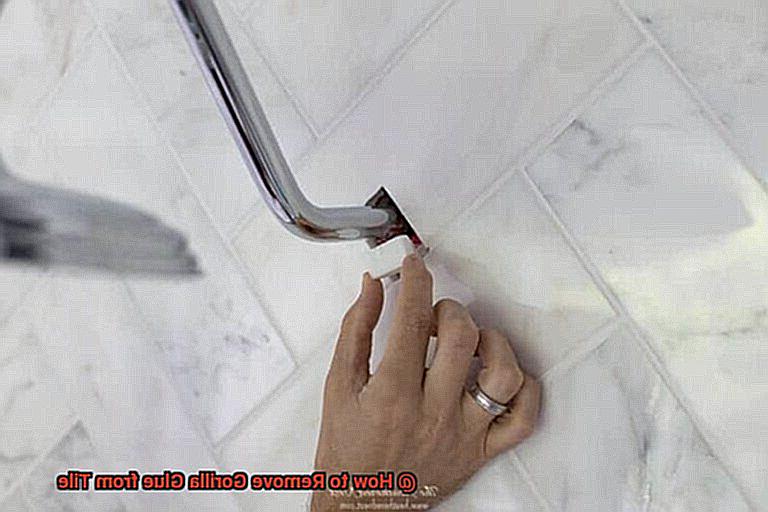
Don’t let excess Gorilla Glue on your tile get you down. Removing it is a simple task when done with care and the right tools. Follow these steps to say goodbye to unwanted glue and hello to a smooth, flawless tile surface.
First, grab a plastic scraper or putty knife and gently scrape away as much of the excess glue as possible. Remember to hold the scraper at a low angle and work carefully to avoid any damage to the tile’s surface.
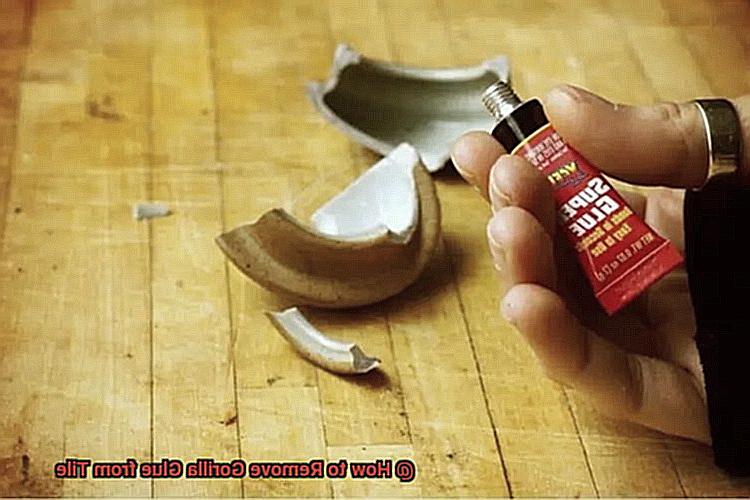
If the glue is being stubborn, don’t worry, you’ve got options. Try using acetone or rubbing alcohol as a solvent to soften the glue before scraping. But make sure to test the solvent in an inconspicuous area of the tile first to avoid any discoloration or damage.
After scraping, it’s time for some fine-grit sandpaper or a sanding sponge to gently sand away any remaining residue. Go slow and easy, applying only a light touch and minimal pressure to protect your tile.
Once you’ve finished sanding, wipe the tile clean with a damp cloth and check for any lingering traces of glue. If necessary, repeat the scraping and sanding process until all remnants are gone.
Finally, give your tile a gentle clean with mild soap and water before allowing it to dry completely.
Applying Acetone or Rubbing Alcohol
There are solutions to this problem, one of which is applying either acetone or rubbing alcohol. As an expert on this topic, I can assure you that these chemicals can effectively dissolve or weaken the glue’s bond with the tile.
To apply acetone, start by ensuring that the area is well-ventilated and protect your hands with gloves. Soak a cotton ball or cloth in acetone and place it directly on the glue. Allow the solvent to penetrate the adhesive for at least 10 minutes before using a plastic scraper or credit card to gently scrape away the softened glue. Repeat this process until all the Gorilla Glue is removed.
Alternatively, you can use rubbing alcohol to remove Gorilla Glue from your tile. Soak a cloth or cotton ball in rubbing alcohol and place it directly on the glue. Wait for at least 10 minutes before using a plastic scraper or credit card to remove the softened glue. You may need to repeat this step several times until all the glue is removed.
It’s important to note that both acetone and rubbing alcohol can potentially damage certain types of tile or grout if left on for too long or used excessively. To avoid this, test a small, inconspicuous area before applying either solution to the entire affected area.
Lastly, exercising caution when working with these chemicals is essential. Wear gloves and work in a well-ventilated area to avoid inhaling fumes. For those with sensitive skin, consider using milder solvents like vinegar or lemon juice instead.
Using a Heat Gun or Hair Dryer (if necessary)
Fear not, because using a heat gun or hair dryer can come to the rescue. However, it’s crucial to use this method with caution and as a last resort.
First things first, ensure you have the appropriate protective gear on, including gloves and eyewear. It’s also important to have proper ventilation in the room before you begin.
To start, set your heat gun or hair dryer to a low heat setting and hold it about 6 inches away from the glue. Gently move the heat source back and forth over the affected area for a few minutes, taking care not to overheat the tile or surrounding area.
As the glue begins to soften, grab a plastic scraper or putty knife and gently scrape away at the softened glue. Keep in mind that it might take several passes with the heat source and scraping tool to fully remove the glue. Patience is key.
It’s essential to note that this method may not be suitable for delicate tile materials that could be damaged by the heat. If you’re unsure about your tile’s durability, it’s best to seek professional assistance.
Peeling Away the Glue
Accidentally spilling Gorilla Glue on your tile can be an absolute nightmare. But don’t lose hope just yet, because peeling away the glue is a common method that can save the day.
To start, make sure the tile surface is completely dry. Any moisture can make the glue even harder to remove. Once you’ve confirmed that the surface is dry, grab your trusty scraper or putty knife and begin peeling away the glue from one corner of the affected area. It’s important to take your time and be gentle to avoid damaging the tile.
But what if the glue is being stubborn? No problem. Try using a heat gun or hairdryer to soften it up. Just apply heat to the area for a few seconds and then try peeling off the glue again. But be careful not to overheat and damage the tile in the process.
While peeling away the glue can be helpful for small areas, it may not remove all traces of it from the tile. In this case, you may need to use other methods such as sanding or using solvents to completely remove any remaining residue.
Remember, patience is key when it comes to removing Gorilla Glue from tile. And always wear protective gear when handling this adhesive.
QYmZSDjLQ9A” >
Conclusion
To sum up, removing Gorilla Glue from tile surfaces may seem like an arduous task, but with the right tools and techniques, you can restore your tiles to their original condition. The first step is to identify the type of tile you’re dealing with to avoid causing any damage. Then, gather the necessary tools such as a scraper or putty knife, acetone or rubbing alcohol, and clean cloths.
Scraping away excess glue is the initial step before applying acetone or rubbing alcohol to dissolve or weaken the bond between the glue and tile. If the glue is stubborn, using a heat gun or hair dryer can help soften it for easier removal. For small areas, peeling away the glue is another effective method.
Throughout the process, patience is crucial as removing all traces of glue may take time and effort. It’s important to exercise caution when working with chemicals and wear protective gear such as gloves and eyewear.
By following these expert tips and tricks, you can successfully remove Gorilla Glue from tile without causing any harm. Don’t let a Gorilla Glue spill ruin your beautiful tiled floors or backsplash – tackle it head-on like a pro.

